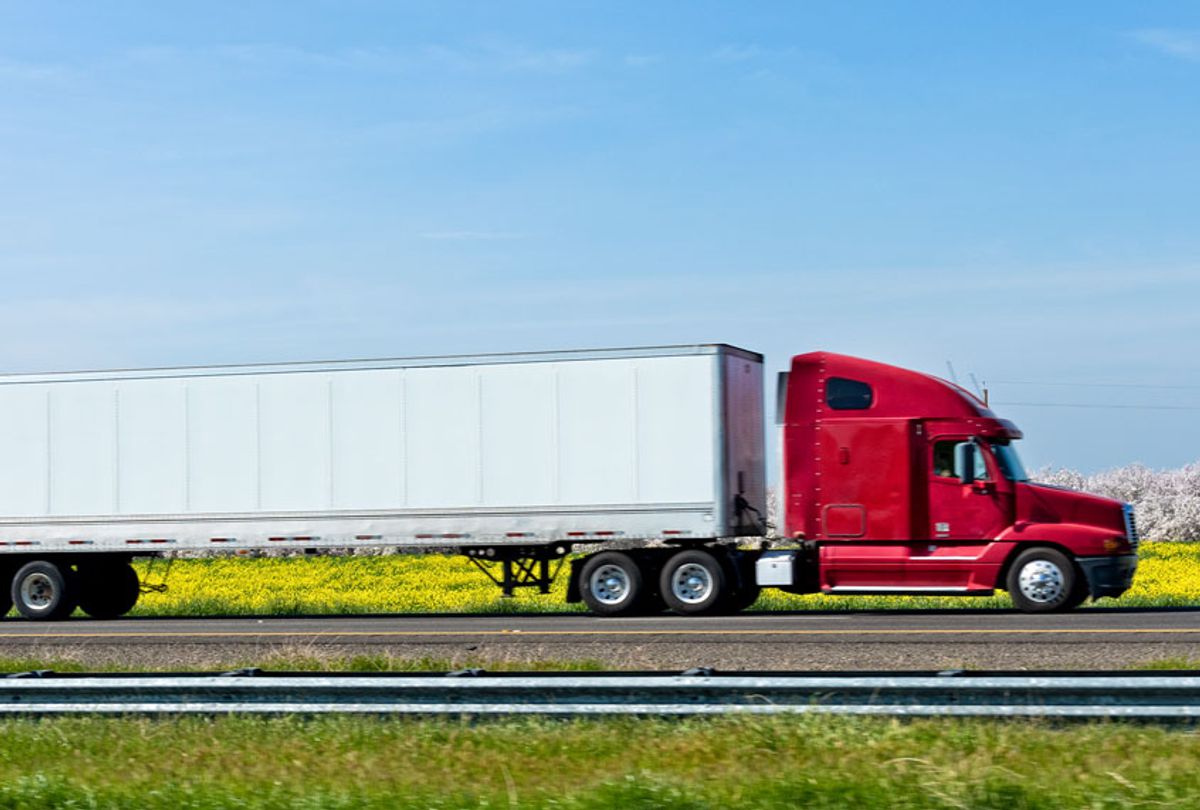Communities that have long borne the brunt of vehicle pollution are one step closer to breathing cleaner air after the Environmental Protection Agency finalized stricter emissions standards for heavy-duty vehicles on Tuesday.
The agency's new rule, part of its larger Clean Trucks Plan, is the first time pollution standards for semi trucks, delivery trucks, and buses have been updated in more than 20 years. It will go into effect when 2027 vehicle models are made available for purchase.
Although heavy-duty vehicles represent less than 5 percent of vehicles on the nation's roads, they are major emitters of nitrogen oxides, a group of polluting gases that play a significant role in the formation of smog. In high concentrations, nitrogen oxides are known to contribute to heart disease, allergies, asthma, and other lung diseases.
The EPA's rule will for the first time require manufacturers to adopt newer technology that reduces pollution from trucks when they are idle, driving at low speeds, or navigating stop-and-go traffic. By 2045, the agency estimates that heavy-duty vehicle nitrogen dioxide emissions will decrease by 48 percent as a result of the rule. The regulation is also expected to prevent up to 2,900 deaths by 2045.
Low-income people of color are more likely to live and work in neighborhoods close to major highways and roads, shipping corridors, and areas with large numbers of factories and warehouses — places where heavy-duty trucks create the most pollution. That's because of the legacy of racist redlining and zoning laws that left many Black and brown families with few other housing options. The construction of the nation's interstate highway system also targeted neighborhoods where communities of color were concentrated. And in some cities, bans on trucks on certain highways simply pushed them into already-burdened neighborhoods.
"These communities have waited decades for action," Katherine García, the director of the Sierra Club's clean transportation campaign, told Grist.
But in recent years, in spite of overall stricter emissions standards for personal vehicles, communities that have fought for years for cleaner, more breathable air have faced setbacks. The rise in global e-commerce — exemplified by online giants like Amazon — has led to an explosion in warehouses, and their attendant delivery trucks, across the country. These "logistics hubs," designed to accommodate constant consumer demand, frequently end up in areas with loose zoning regulations, cheap land, and a high proportion of low-income people of color living nearby.
California's Inland Empire, east of Los Angeles, is the home to the nation's largest concentration of warehouses. The region is also infamous for having the nation's worst ozone and particle pollution. Residents and advocates here have drawn a link between consumer demand for goods and the hundreds, if not thousands, of trucks that travel their roads on a daily basis. These trucks end up driving past and idling by schools, parks, and homes, exposing residents to more air pollution. Earlier this year, a cohort of the region's cities extended moratoriums on warehouse construction to take time to assess the purported economic benefits and the very real environmental impacts of these developments.
"We need systemic change, and we need to just clean up these trucks, and we have the solutions," Melody Reis, the senior legislative manager at Moms Clean Air Force, a national organization that advocates for cleaner air, told Grist.
"Inaction is injustice for these communities," said Reis, "and this rule should make a tremendous amount of difference."




Shares